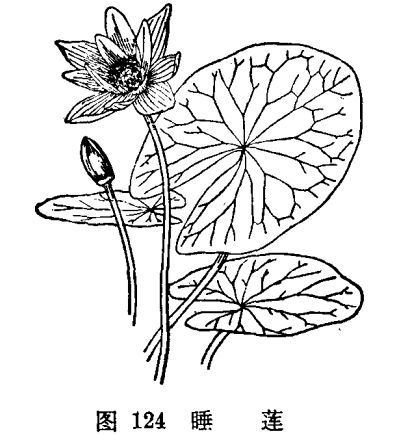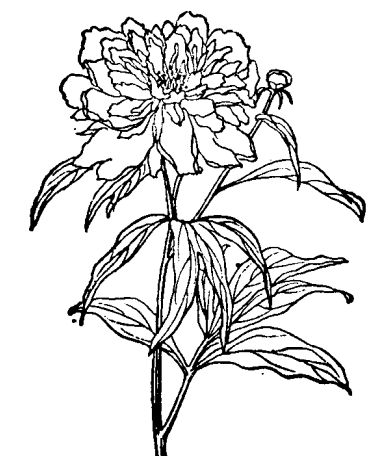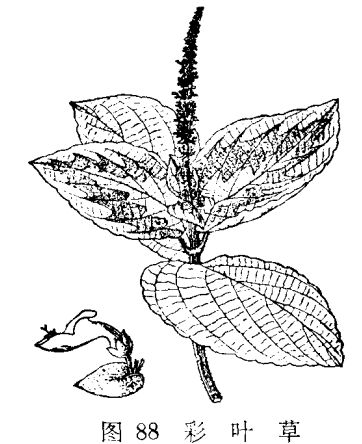How do water lilies reproduce? what are the breeding methods?
Water lilies are mainly propagated by ramets, usually after defrosting in spring. First dig the exuberant underground stem from the pond mud, select the section with new buds, cut it into 6mur10cm long underground stem, as the mother seed for ramet propagation, and then plant it flat in the mud, but not too deep. Usually keep the new buds on the underground stem flat with the soil surface, and the mother species of the underground stem after planting can be released only after a little sun exposure. At the beginning, the water should be shallow rather than deep, and when the temperature rises, new buds begin to sprout, and then deepen the water level. At this time, the water in the pool should not flow too much, and the deepest water level should not exceed 30cm. Because the petiole of the water lily is thin and weak, when the water level exceeds 40 cm, the new bud cannot be drawn out. If you want to plant water lilies in a deep pond with a water depth of more than 40 cm, the cultivation method should be changed to a cylinder, or the baskets should be planted in the water after they are planted in baskets, or the baskets should be filled up to the specified depth of the water level before planting. The soil planted in baskets of water lilies should generally be dried and crushed with paddy field mud, and then fermented bean cakes and bone meal should be added to ensure the good growth of newly planted water lilies.

Water lilies can also be sown with seeds. However, because the water lily fruit ripens in the water, and the mature seeds often rot because of the fruit shell, the seeds naturally sink into the mud bottom of the water, so the seeds must be harvested from the mud bottom. After the seeds are fished out, they must still be stored in water. If you do not do so, once the seed is dry, it will lose its germination ability. When sowing in spring, take the seeds out of the water and sow them in shallow cement. After the seeds sprout, they gradually deepen the water level. (this article is excerpted from the whole book "Rural farming")
How to reproduce water lilies, three propagation methods of water lilies (cutting / ramet / sowing)
Water lilies, similar in shape to lotus flowers, are more valuable flowers, often found on the lakeside of the park, and are often potted at home. In daily farming, people only need to know how to grow water lilies, but it is also important for veterans to master the breeding methods of water lilies. How do water lilies reproduce? Follow the editor to find out.
How to propagate water lilies, cuttings / ramets / sowing
There are many kinds of water lilies, and they are also rich in colors, so it is worth looking forward to breeding several different kinds of water lilies together. As for how to reproduce water lilies, there are three methods: cutting, ramet and sowing, the specific operation, we continue to look down.
2. Three breeding methods of water lilies
Cutting propagation, ramet propagation, sowing propagation
(1) Cuttage propagation of water lilies
① cutting time
In the breeding method of water lilies, the choice of time is very right. And water lily cuttings should choose spring and autumn, when the growth is booming.
② cuttings selection
The cuttage propagation of flowers, the most important thing is cuttings, which directly affect the survival rate after propagation. When selecting adventitious buds for cutting propagation, flower friends should choose mature and robust leaves of water lilies.
③ pre-insertion preparation
Flower friends still need to make some preparations before cutting. First of all, fill the flowerpot with soil or clay, then pour it through with water, and then apply a small amount of organic fertilizer.
④ cuttage start
Put the cuttings in a prepared flowerpot, press the leaves upside down into the water, press the soil around, the adventitious buds should be upward, and the leaves should be soaked in water.
⑤ plug-in management
After the above work, the cutting propagation of water lilies is basically completed, and then the maintenance is left. Water lilies like bright light very much, so flower lovers should cultivate them in places where they can have more than half a day's sunshine, apply organic fertilizer once a year, and change the soil after two or three years.
(2) ramet propagation of water lilies.
In addition to cuttings, water lilies are mainly propagated by individual plants. According to different varieties of water lilies, the split time is different:
① ramet time
Hardy water lilies should be divided in March-April before germination in early spring, while cold-resistant water lilies should be divided in warm weather, usually around the middle of May.
② ramet method
First of all, the water lily will dig out the rhizome, select the rhizome with full new buds, and cut into 8-10cm long root segments, each with at least one bud. Then, bury the terminal bud upward in the topsoil, and the depth of the soil in the flowerpot, preferably the bud eye is level with the soil surface.
③ maintenance and management
After planting, bask in the sun for a while to inject into shallow water, in order to maintain the temperature of the water, but irrigation should not be too deep, otherwise it will affect germination. The water level will be deepened when the temperature rises and new buds sprout. Then put it in a well-ventilated and sunny place for maintenance. Note: keep the basin water clean when the temperature is high.
(3) sowing and propagation of water lilies.
Flowers with seeds can be sown and reproduce, and water lilies will bear fruit after flowering, so the breeding method of water lilies can also be sowed. Specific operation: water lily seeds must be stored in water after harvest. Sowing time should be from March to April, basin soil with fertile clayey loam, rich soil should not be too full, should be 5-6cm away from the basin mouth.
After sowing, the water lily seeds are covered with 1cm, pressed and immersed in water, and the water surface is 3-4cm higher than the basin soil. After that, cover the basin with glass and place it in a warm place to increase the temperature in the basin. The suitable sowing temperature is 25-30 ℃. After about half a month, it can blossom in the second year.
Propagation methods of water lilies
Water lilies are ornamental plants with beautiful flowers and leaves. Ancient Greece and Rome were originally worshipped as goddesses. Italian parks in the 16th century were mostly used to decorate fountain pools or decorate the exterior of halls. Today, we will introduce the breeding methods of water lilies.
Breeding methods of water lilies:
Ramet propagation
Water lilies are mainly propagated by ramets. Cold-tolerant species usually split from March to April before germination in early spring, and cold-tolerant species have high requirements for air temperature and water temperature, so they can not be divided until around the middle of May. When ramet, first dig out the rhizome, select the rhizome with full new buds, cut into 8~10cm-long root segments, each segment with at least one bud, and then plant. The terminal bud is buried upward in the topsoil, and the depth of the covered soil is that the bud eye of the plant is flat with the soil surface, and each pot is planted in 5-7 segments. After planting, a little sun, can be injected into shallow water, in order to maintain the temperature of the water, but irrigation should not be too deep, otherwise it will affect germination. The water level will be deepened when the temperature rises and new buds sprout. Put it in a well-ventilated and sunny place for maintenance, the cultivation water depth is 20~40cm, the summer water level can be properly deepened, and attention should be paid to keeping the basin water clean in high temperature season. In a small number of potted plants, the water lilies that have been planted for 2-5 years can be poured out of the pot, cut into 2-4 pieces, and then planted in the pot.
Sowing and reproduction
Water lilies can also be sowed and propagated, that is, they are transferred to water after blooming, and before the fruit is ripe, the flowers are wrapped in gauze bags so that the seeds fall into the bag after the fruit is broken. After harvesting, the seeds must still be stored in water, such as dry storage will lose the ability to germinate. Sowing in March-April, the basin soil should not be too full with fertile clayey loam, it is appropriate to leave the basin mouth 5~6cm, sow the seeds and cover the soil 1cm, press and soak into the water, the water surface is higher than the basin soil 3~4cm, cover the basin soil with glass, put it in the sunny warm place, in order to increase the temperature in the basin. The suitable sowing temperature is 25: 30 ℃. After about half a month, it can blossom in the second year.
This is the end of the breeding method of water lilies. Water lilies are among the most valuable aquatic flowers. The appearance is similar to that of the lotus, except that the leaves and flowers of the lotus protrude to the surface, while the leaves and flowers of the water lily float on the surface. Water lilies are known as "sleeping beauties in flowers" because they roll day and night.
- Prev

Propagation methods and methods of Paeonia lactiflora
Paeonia lactiflora is mainly propagated by individual plants, and it can also be sown. 1. Split-plant method: this method can maintain the excellent characteristics of the variety, and the flowering date is earlier than that of the sower. The ramets of Paeonia lactiflora must be carried out in autumn, usually from late September to early October, when the roots can resume growth for a period of time before winter.
- Next

How to cultivate, collect and propagate Colored Leaf Grass
[alias] five-colored grass, perilla, brocade perilla. Labiatae, Coleophora. [form] tender perennial herbs or subshrubs, often cultivated annually. Plant height 30 ^ 50 cm, less branched, stem quadrangular. Leaves opposite, rhomboid-ovate, thin, more than 15 cm long, deeply coarsely dentate, long pointed
Related
- Fuxing push coffee new agricultural production and marketing class: lack of small-scale processing plants
- Jujube rice field leisure farm deep ploughing Yilan for five years to create a space for organic food and play
- Nongyu Farm-A trial of organic papaya for brave women with advanced technology
- Four points for attention in the prevention and control of diseases and insect pests of edible fungi
- How to add nutrient solution to Edible Fungi
- Is there any good way to control edible fungus mites?
- Open Inoculation Technology of Edible Fungi
- Is there any clever way to use fertilizer for edible fungus in winter?
- What agents are used to kill the pathogens of edible fungi in the mushroom shed?
- Rapid drying of Edible Fungi

